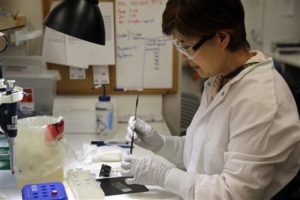Washington County health officials are investigating after cases of Shiga-toxin producing E. coli were reported after some attendants at the Washington County Fair became ill.
No sources has been identified, but public health officials said that livestock at the Washington County Fair may have been a cause, as well as food items brought to the fair from outside.
According to Washington County, anyone who attended the Washington County Fair and has had, or develops, symptoms of stomach cramps, diarrhea, vomiting or fever, should call their health care provider.
“The best way to prevent getting STEC infection is by washing hands well with soap and water,” Baumann said. “It’s very important to wash your hands after using the bathroom or changing diapers, before preparing or eating food, and after contact with animals or their environments at farms, petting zoos and fairs.”
A table of petting zoo outbreaks is available at https://barfblog.com/wp-content/uploads/2016/05/Petting-Zoo-Outbreaks-Table-5-5-16.xlsx
Best practices for planning events encouraging human-animal interations
Zoonoses and Public Health 62:90-99
Erdozain , K. KuKanich , B. Chapman and D. Powell, 2015
http://onlinelibrary.wiley.com/doi/10.1111/zph.12117/abstract?deniedAccess
Educational events encouraging human–animal interaction include the risk of zoonotic disease transmission. ‘It is estimated that 14% of all disease in the USA caused by Campylobacter spp., Cryptosporidium spp., Shiga toxin-producing Escherichia coli (STEC) O157, non-O157 STECs, Listeria monocytogenes, nontyphoidal Salmonella enterica and Yersinia enterocolitica were attributable to animal contact. This article reviews best practices for organizing events where human–animal interactions are encouraged, with the objective of lowering the risk of zoonotic disease transmission.

